Understanding The Role Of Play In Autism Development
The Crucial Role of Play in Autism Development
Play is a fundamental aspect of childhood development, serving as both a natural and essential tool for learning and growth. For children with autism spectrum disorder (ASD), play plays an even more vital role. It influences neural pathways, supports social and emotional skills, and can mitigate some of the behavioral and communication challenges characteristic of autism. This article explores how play impacts the development and management of children with autism, illuminates effective models like Integrated Play Group and Floor Time, emphasizes the importance of pretend play, and offers strategies to promote meaningful play experiences.
The Impact of Play on Brain Development in Children with Autism
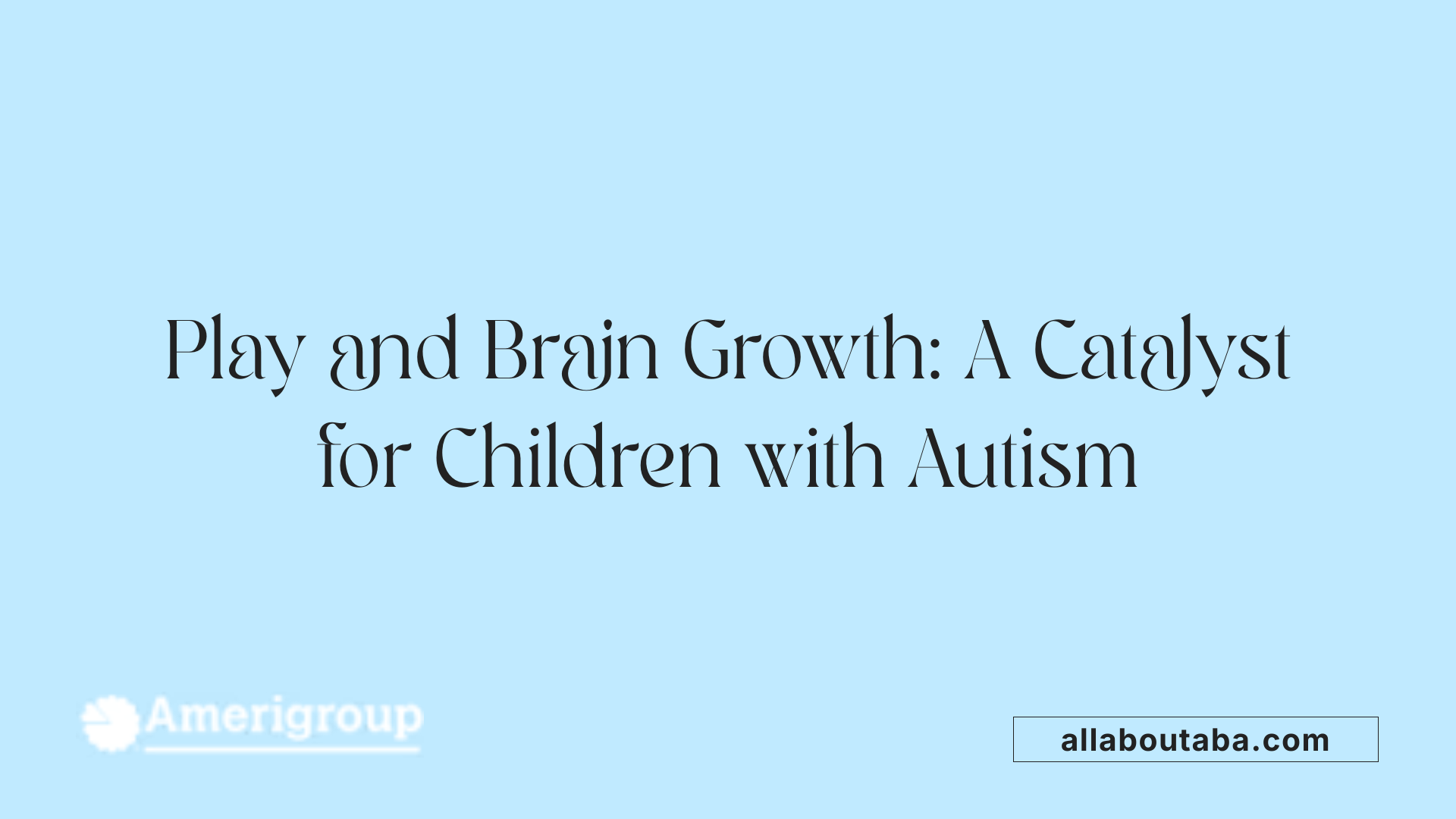
What is the role of play in autism development and management?
Play is essential for the overall development and management of children with autism. It supports critical skills such as social interaction, cognition, emotional regulation, and communication. Play provides a natural, engaging context where children learn through experience and exploration.
Children with autism often experience delays and differences in play behavior. They may prefer repetitive actions, focus intensely on objects, or isolate themselves during play activities. These patterns can affect their social engagement and emotional growth.
Different types of play, including structured games, pretend play, and peer interactions, can be tailored to each child's needs. Therapeutic approaches like play therapy, applied behavior analysis (ABA), and social skills training utilize various play forms to promote learning and behavioral change.
Supporting play in autistic children involves understanding their interests, creating inclusive environments, and using strategies like visual supports, routines, and sensory play activities. Such approaches facilitate skill development and help children connect with peers and adults.
Overall, play acts as a powerful tool for fostering development in children with autism. It not only enhances their abilities but also encourages joyful engagement, emotional expression, and social bonding, making it a vital component of autism management.
Limitations in Play Among Children with Autism
What is the role of play in autism development and management?
Play is a fundamental aspect of childhood development and serves as an essential tool in the growth of children with autism. It supports the development of social, cognitive, emotional, and communication skills. Through play, children learn to interact with their environment and others, which is especially crucial for those with autism, who often face challenges in these areas.
Children with autism tend to experience delays or atypical patterns in their play behaviors. They may show a preference for repetitive activities, focus intensely on objects, or engage in solitary play rather than participating in typical social games. Their play may lack the symbolic or imaginative elements commonly seen in neurotypical children.
Furthermore, difficulties with pretend or symbolic play are common. Unlike their peers, children with autism might not use toys to represent other objects or roles, which can hinder their social and emotional development. Several barriers contribute to these differences, including communication deficits, limited understanding of others' feelings, restricted interests, and peer exclusion.
In school settings, these play challenges can result in social isolation during recess and recreational activities, further impairing their ability to develop social skills. Fortunately, various interventions support play development. Play therapy, including models like the Integrated Play Group (IPG) and Floor Time, encourages children to explore relationships and express emotions in a safe, supportive environment.
Parents and educators can promote play skills through strategies such as incorporating favorite objects, modeling desired play behaviors, establishing routines, and emphasizing sensory activities. Structured play routines, especially those integrated into therapies like Applied Behavior Analysis (ABA), help children develop communication and social skills while reducing stereotypic behaviors.
Research confirms that fostering play in children with autism not only enhances their developmental skills but also improves behavioral regulation and social interactions. Overall, recognizing and addressing the limitations in play is vital for supporting the holistic growth and social inclusion of children with autism.
Therapeutic Models: Integrated Play Group and Floor Time
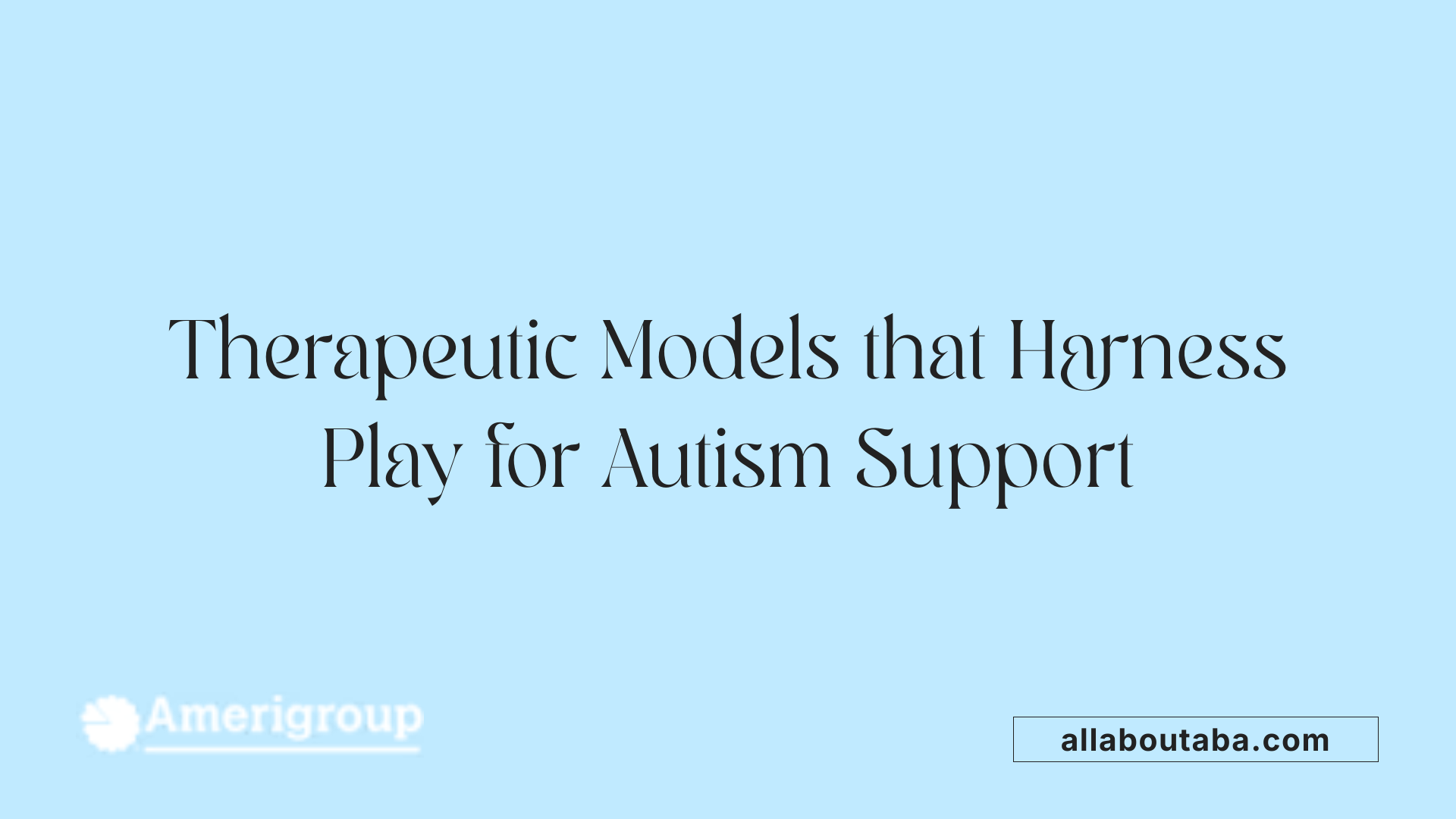
How do play therapy models like Integrated Play Group and Floor Time impact children with autism?
Play therapy approaches such as the Integrated Play Group (IPG) and Floor Time are designed to foster social, emotional, and cognitive growth in children with autism through natural, child-centered interactions.
The IPG model, rooted in Vygotsky’s social constructivist theory, prioritizes inclusive group play. It aims to develop children’s social skills by encouraging them to engage with peers using objects and activities that interest them. Guided participation by trained adults and peers helps children enhance their symbolic and functional play abilities, ultimately fostering empathy, mutual friendships, and social initiation.
Conversely, the Floor Time model, developed by Greenspan, targets emotional and relational development through child-led, affectively engaging activities. It emphasizes building relationships by following the child’s interests, supporting spontaneous communication, and nurturing imagination. This approach helps children improve their ability to express feelings, develop symbolic play, and share emotional experiences.
Both models are supported by research indicating they promote reciprocal interactions and reinforce naturalistic learning. They help children develop joint attention, emotional regulation, and problem-solving skills in supportive, low-pressure environments.
How do these models promote social and emotional development?
The core principle of both IPG and Floor Time is fostering meaningful engagement and emotional connection. By creating opportunities for children to interact freely and on their own terms, these models reduce anxiety and facilitate authentic social experiences.
In IPG, peer interaction drives social development, encouraging children to share, cooperate, and take turns. It nurtures a sense of community and belonging, which is often challenging for children with autism.
Floor Time emphasizes emotional attunement and relationship-building, helping children understand and express their feelings. This emotional foundation supports improvements in communication and imaginative play.
What is the role of adult facilitation and peer interaction?
Adults in these models act as facilitators, providing gentle guidance rather than direct instruction. In the IPG, trained adults and peers facilitate play to promote social interactions and mutual understanding.
In Floor Time, adults support the child’s interests and emotions, encouraging exploration and symbolic activity without demanding specific behaviors.
Peer interaction in the IPG further enhances social skills as children learn through shared play, empathy, and cooperation. It creates a natural environment for practicing social rules and developing friendships.
What research evidence supports their effectiveness?
Studies like those by Wolfberg and Schuler (1993) utilizing the IPG model reported increases in symbolic and functional play, along with better peer interactions.
Research by Greenspan and Wieder involving over 200 children demonstrated significant improvements in affect, social behavior, and cognitive skills following two years of Floor Time therapy. Many children showed reductions in autistic symptoms, such as those measured by the Childhood Autism Rating Scale (CARS).
While promising, these studies highlight the importance of prolonged intervention and consistent application. Ongoing research continues to evaluate and refine these models, aiming to solidify their positions within best practices for autism therapy.
| Model | Principles | Objectives | Evidence Summary |
|---|---|---|---|
| Integrated Play Group | Child-led play, peer inclusion, guided participation | Enhance social, symbolic, and functional play skills | Improved social interaction and play patterns (Wolfberg & Schuler, 1993) |
| Floor Time | Relationship-based, affective engagement | Develop emotional understanding, symbolic play, communication | Significant behavioral and social gains (Greenspan & Wieder) |
| Role of Adults | Facilitate without direct commands | Support exploration, emotional expression, socialization | Empirical data shows positive developmental outcomes |
| Peer Interaction | Encourage cooperation and sharing | Foster social skills, reduce isolation | Increased peer engagement observed in studies |
The Significance of Pretend Play in Autism Development
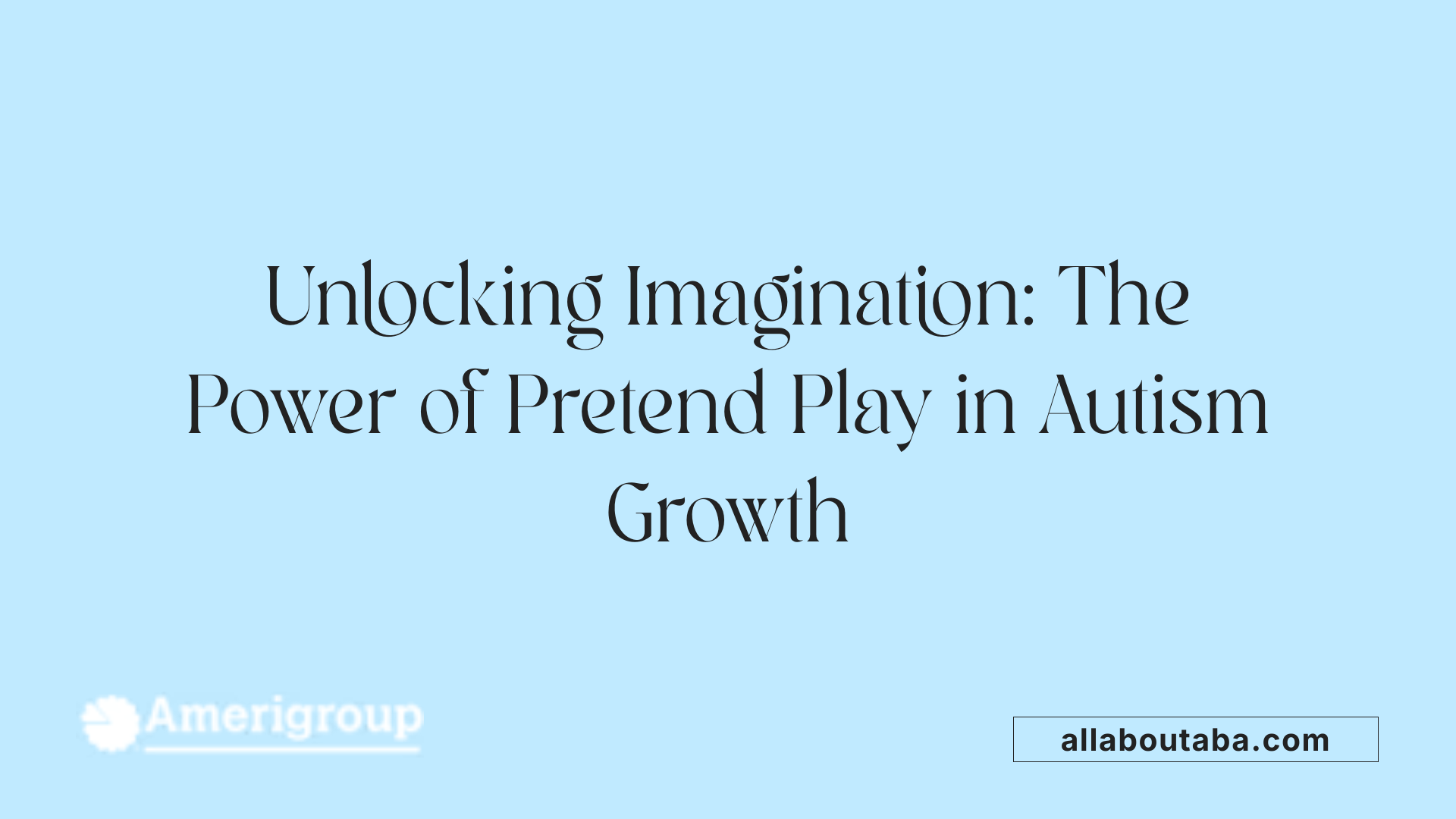
Why is pretend play important for children with autism?
Pretend play plays a crucial role in childhood development, especially for children with autism spectrum disorder (ASD). It acts as a foundation for developing various skills that underpin social, cognitive, and emotional growth. When children engage in imaginative activities, they practice understanding others’ perspectives, which enhances their social cognition.
For children with autism, who often exhibit challenges in social interactions and communication, pretend play offers an opportunity to explore and practice these skills in a safe and controlled environment. It encourages language development, vocabulary expansion, and the ability to engage in cooperative play with peers.
However, children with ASD may face specific difficulties, like sensory sensitivities, literal thinking, or limited interest in imaginative scenarios. To support them, therapists and parents can employ tailored strategies such as joint play sessions, visual supports, and sensory-friendly toys. These adaptations enable children to participate more fully and benefit from the activities.
Research shows that improvements in pretend play are linked to broader developmental benefits. Children often experience gains in emotional regulation, executive functioning, and problem-solving abilities as they become more proficient in imaginative play.
Thus, nurturing pretend play not only enhances immediate social and communicative skills but also contributes to overall growth, confidence, and well-being in children with autism.
Research and Evidence Supporting Play Interventions
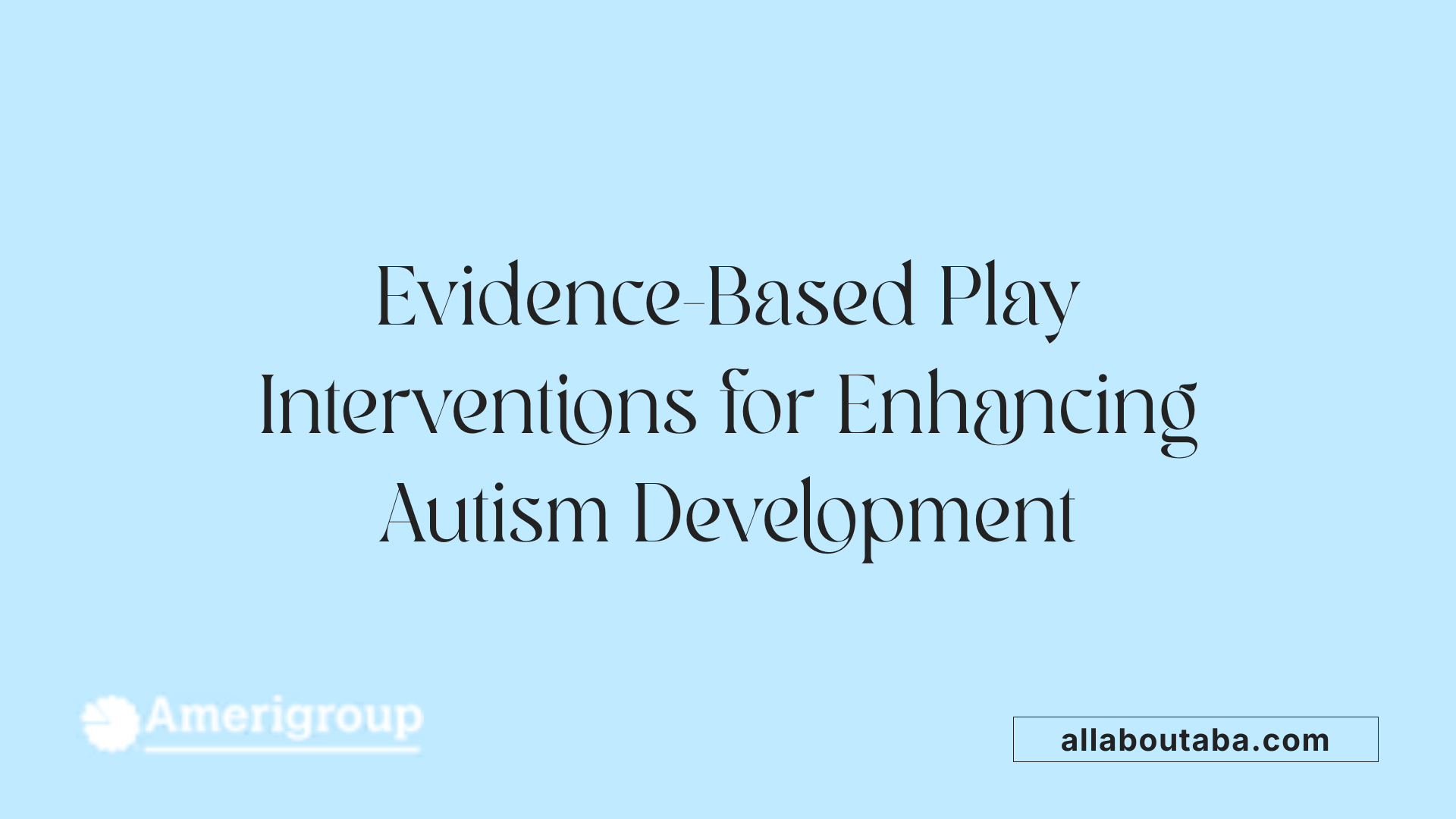
What evidence exists regarding the effectiveness of play interventions for children with autism?
Research has increasingly shown that play-based therapies can significantly benefit children with autism. Evidence indicates improvements in social interaction, communication skills, and behavioral regulation. Specific intervention models like the Integrated Play Group (IPG) and Floor Time have demonstrated positive outcomes. For instance, studies using the IPG model reported increased functional object use and social play, while Greenpan’s Floor Time approach resulted in notable enhancements in affect, social skills, and cognition among children.
Play therapy also promotes neuroplasticity by activating neural circuits, increasing brain-derived neurotrophic factor (BDNF), and influencing neurotransmitters like dopamine and GABA. This biological effect supports expressive skills and cognitive development.
Recent technological tools, such as digital games and apps, add motivation and accessibility to play interventions. These tools have been delivered by parents and teachers over an average of 11 weeks, showing promising results in fostering engagement and skill acquisition.
While substantial progress has been made, many studies face limitations such as small sample sizes and lack of standardized protocols. Nonetheless, clinical observations consistently report reductions in stereotypic behaviors, enhanced social communication, and better emotional regulation using play interventions.
In summary, current research supports the effectiveness of play therapies, especially when tailored to individual needs, as a promising approach to improving multiple developmental domains in children with autism. However, further large-scale, rigorous studies are needed to determine optimal practices and ensure broader applicability.
How does play therapy support overall development in children with autism?
Play therapy not only boosts social and communication skills but also fosters emotional expression, cognitive growth, and adaptive behaviors. It enables children to explore the world, build relationships on their own terms, and develop a desire to engage socially. Moreover, play interventions help children move from repetitive or isolated behaviors toward more adaptive, functional, and symbolic play—crucial markers of developmental progress.
Summary Table of Evidence and Outcomes
| Intervention Type | Benefits | Limitations | Notable Studies/Results |
|---|---|---|---|
| Integrated Play Group (IPG) | Increased social and symbolic play | Small sample sizes | Wolfberg & Schuler (1993): Improved use of objects and play |
| Floor Time Approach | Improved affect, social, cognitive skills | Needs further replication | Greenspan & Wieder: Many children no longer classified as autistic after treatment |
| Play-based ABA therapy | Communication, social, motor, emotional skills | Variability in protocols | Supported by research indicating broad developmental gains |
| Technological Play Tools (Apps, Digital Games) | High motivation, engagement, accessibility | Long-term efficacy unknown | Recent studies show positive short-term outcomes |
Why is continued research important?
Though current evidence is promising, ongoing research is vital to optimize approaches, understand long-term effects, and develop standardized protocols. Rigorous, large-scale studies will help confirm best practices and ensure that interventions can be effectively generalized to diverse groups of children with autism.
Strategies to Promote Play in Children with Autism
What strategies can be used to promote and support play in children with autism spectrum disorder?
Supporting play in children with autism involves creating an environment that encourages exploration and social interaction. First, the environment should be tailored to include sensory considerations, such as calming textures, appropriate lighting, and noise levels, to make the space both inviting and calming for children with sensory sensitivities.
Structured and predictable routines help children understand what to expect during play, reducing anxiety and promoting engagement. Visual supports, such as visual schedules, cue cards, and timers, assist children in following steps and transitioning between activities smoothly. These visual tools align with the child’s developmental level and interests, making play more accessible and enjoyable.
Incorporating a variety of play types is essential. Activities that promote symbolic and pretend play, cooperative play, and hands-on exploration help expand social skills and cognitive abilities. Play models like the Integrated Play Group (IPG) and Greenspan’s Floor Time emphasize guided yet child-directed play, fostering emotional growth, social bonds, and cognitive development.
Collaboration with families and educators further enhances play support. Training parents and teachers on effective strategies, positive reinforcement, and understanding individual preferences ensures consistency and nurtures skill development.
Using technology and adaptive toys can also be beneficial. Interactive and technology-based play routines, along with toys designed for children with sensory or motor challenges, promote engagement and skill acquisition.
Overall, strategies combining structured environments, individualized approaches, social facilitation, and support from caregivers and educators can lead to meaningful improvements in play and developmental outcomes for children with autism.
Integrating Play into Educational and Therapeutic Settings
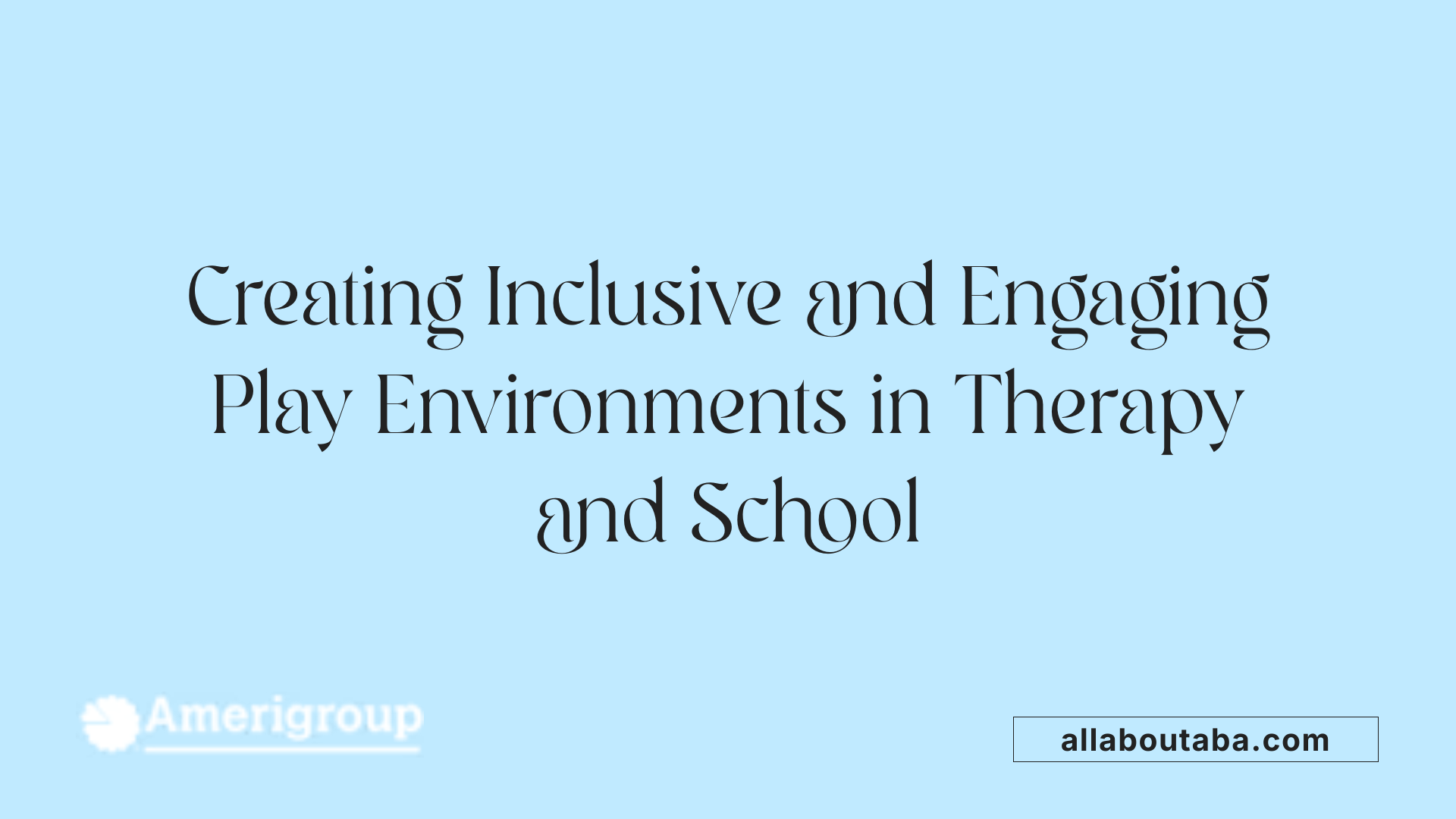
How can play be integrated into therapy and school environments for children with autism?
Play is a fundamental part of child development and offers unique opportunities for children with autism to learn, explore, and build vital social, emotional, and communication skills. To effectively incorporate play into therapy and educational settings, professionals must be trained to facilitate activities that are inclusive, engaging, and tailored to each child's developmental needs.
Therapists and educators are crucial in designing environments where children feel safe and motivated to participate. This includes creating spaces that cater to sensory sensitivities and accommodate communication challenges, such as visual supports or sensory-friendly zones. Activities should be adaptable, combining structured routines with free play to provide a balance that encourages spontaneous interactions and skill development.
Integrating play with other interventions, such as Applied Behavior Analysis (ABA), enhances the generalization of learned skills and promotes functional outcomes. For instance, ABA strategies can incorporate play routines to teach social skills or language, making learning more engaging and meaningful.
Routine inclusion of diverse play types—both structured and unstructured—can facilitate social interactions, reinforce educational goals, and promote peer engagement. Peer-mediated activities, where children learn alongside their peers through guided interactions, significantly improve social competence.
Adaptations for Diverse Needs and Settings
Understanding that children with autism have varied needs is essential when designing play-based interventions. Sensory sensitivities may require adapting play materials—using soft textures, noise-canceling headphones, or calming activities. Communication barriers can be addressed through visual cues, augmentative communication devices, or simplified language.
Settings may include classrooms, therapy rooms, or community spaces, each demanding tailored strategies. For example, in school, visual schedules and social stories can prepare children for play activities, reducing anxiety and increasing participation.
Combining Play with Other Interventions like ABA
Combining play with behavioral therapies such as ABA leverages the strengths of both approaches. Play routines can serve as natural contexts for teaching communication, imitation, and social skills.
Structured interventions might involve prompting children to initiate play or respond to social cues during play activities. This combination ensures learning is both functional and enjoyable, fostering motivation and engagement.
Training and Support for Caregivers and Teachers
Ongoing professional development is vital to ensure staff stay updated on effective play strategies. Workshops, mentorship, and collaborative planning enable caregivers and teachers to implement playful interventions confidently.
Supporting families is equally important. Educating parents on how to incorporate play into daily routines, use favorite toys, and reinforce skills fosters consistency and promotes skill generalization across settings.
Examples of Successful Implementation
Successful integration often involves collaborative efforts among families, educators, therapists, and peers. For instance, a school might establish a dedicated play zone with toys tailored to sensory needs and structured social activities guided by trained staff.
In a therapy setting, therapists might use play-based ABA techniques to teach language through turn-taking games or build social skills via role-playing activities.
By fostering an environment that prioritizes flexible, child-centered play, children with autism can experience meaningful interactions and developmental progress.
| Aspect | Strategy | Example | Impact |
|---|---|---|---|
| Environment | Sensory adaptations | Calming corner with soft mats | Reduces sensory overload |
| Technique | Peer-mediated play | Buddy systems | Enhances social skills |
| Intervention | Combined play and ABA | Turn-taking games | Develops communication and social behavior |
| Support | Caregiver training | Workshops and coaching | Ensures consistency and progress |
Efforts to incorporate play into autism therapy and education require thoughtful planning, ongoing training, and a commitment to adapting practices to meet each child's unique needs. When executed effectively, play not only enhances developmental outcomes but also creates a joyful and inclusive learning experience.
Harnessing Play for Holistic Development in Autism
Play is a cornerstone of childhood development that holds exceptional importance for children with autism. Through structured models like Integrated Play Group and Floor Time, as well as tailored interventions focusing on pretend and symbolic play, children can develop vital social, emotional, and cognitive skills. Evidence continuously supports the efficacy of play-based therapies in promoting communication, reducing stereotypic behaviors, and encouraging neuroplasticity. Promoting play in inclusive environments requires strategies that are individualized, sensory-sensitive, and supported by technology and family involvement. Educators and therapists are vital in integrating play into therapeutic and educational settings, ensuring children with autism receive the engaging, adaptive, and enriching experiences necessary for holistic growth. As research advances, our understanding of how to leverage play for optimal development continues to grow, offering hope and practical pathways for supporting children across the autism spectrum.
References
- Play therapy in children with autism: Its role, implications ...
- An Examination Of Play Intervention Strategies for Children ...
- The Role of Play in the Social Development of Children With ...
- The Power Of Play In Autism: A 6-Step Guide For Parents
- Scoping Review on Play-Based Interventions in Autism ...
- Play therapy in children with autism: Its role, implications ...
- An Examination Of Play Intervention Strategies for Children ...
Other articles
Recent articles

Best Ways To Foster Collaboration Between Parents And Schools For Autism Support

Supporting Autistic Children During Transitions Between Activities

The Role Of Teachers In Fostering Autism Peer Acceptance

Using Art Therapy To Support Children With Autism

Autism And Strategies For Addressing Sensory Defensiveness

Autism And The Benefits Of Structured Leisure Activities

How To Support Autistic Students During Exam Season

Autism And Goal Setting For Personal Growth

How To Use Gamification In Autism Learning Programs

How Schools Can Reduce Bullying Of Autistic Students

Early Intervention Strategies For Autism Spectrum Disorder

The Role Of Therapists In Autism Life Skills Coaching

How To Support Autistic Individuals In Crisis Situations

Autism And Self-Care Routines For Stress Management

Understanding Echolalia And Its Role In Autism Communication

Autism And Fine Arts Education Benefits

The Impact Of Multisensory Learning On Autism Education

How Family Counseling Supports Autism Household Dynamics

Best Practices For Inclusive Playgrounds For Autism

Best Practices For Autism-Friendly Shopping Centers

How Autism Affects Fine Motor Skill Development

Best Ways To Introduce Sensory Activities Into Daily Routines

How Sports Teams Can Be Inclusive Of Autistic Players

Autism And Strategies For Building Workplace Resilience

Autism And The Impact Of Hormonal Changes During Puberty

How To Support Autistic Students In Foreign Language Classes

Best Ways To Teach Money Skills To Teens With Autism

Supporting Siblings Of Children With Autism

Autism And Co-Occurring Gastrointestinal Disorders

The Role Of Art Projects In Autism Sensory Integration

How Schools Can Incorporate Sensory Break Spaces

Best Practices For Autism Sensory Regulation At School

Autism And Strategies For Teaching Organizational Skills

Understanding The Relationship Between Autism And Anxiety Disorders

Autism And Life Planning For Long-Term Care

Exploring Visual Supports In Autism Education

Ways To Encourage Social Interaction In Children With Autism

The Connection Between Autism And Dyscalculia

The Role Of Occupational Therapy In Transition Planning For Autism

The Role Of Physical Therapists In Autism Motor Skills Support

How To Teach Decision-Making Skills To Autistic Young Adults

The Connection Between Autism And Epilepsy

Best Practices For Transitioning Autistic Children Into New Schools

Autism And Time Management Challenges In Adulthood

The Role Of Visual Arts In Autism Communication Development

How To Address Tactile Defensiveness In Autism

Best Practices For Telehealth Autism Therapy

How To Help Autistic Children Develop Friendship Skills

How Schools Can Support Autistic Students In Career Prep

Best Strategies For Autism-Friendly Event Planning

Understanding Noncontingent Reinforcement In Autism Behavior Plans

How Drama Therapy Benefits Autistic Individuals

Best Practices For Autism-Friendly Fitness And Recreation Centers

Best Ways To Promote Healthy Social Media Use For Autistic Teens

How To Help Autistic Children Cope With Public Speaking

Autism And Strategies For Managing Unexpected Changes

Best Podcasts About Autism For Parents And Educators

Autism And The Impact Of Seasonal Changes On Behavior

The Role Of Diet In Managing Co-Occurring Conditions With Autism

Sleep Challenges In Autism And Practical Solutions

Best Ways To Build Daily Routines For Autistic Children

Best Practices For Supporting Autistic Entrepreneurs

Autism And Strategies For Navigating Large Social Gatherings

Adaptive Sports And Recreational Activities For People With Autism

Autism And The Benefits Of Story-Based Learning Activities

Understanding The Role Of Play In Autism Development

Autism And The Impact Of Environmental Noise On Learning

How To Create Autism-Friendly Community Spaces

Autism And Chronic Health Conditions: What To Know

The Role Of Care Managers In Autism Life Planning

How To Teach Social Boundaries To Autistic Children

How Autistic Individuals Experience Empathy Differently

How To Support Autistic Employees In Remote Work Settings

Autism And The Relationship Between Motor Skills And Learning

How To Create Community Resource Guides For Autism Families

How To Teach Daily Living Skills To Autistic Teens

Autism And The Impact Of Mind-Body Practices On Stress Reduction

Autism And The Benefits Of Outdoor Group Activities

How To Create Autism-Friendly Sensory Paths In Schools

Best Practices For Autism-Friendly Park And Recreation Areas

Autism And Strategies For Reducing School Refusal

Supporting Autistic Individuals In Public Speaking

The Role Of Diet In Managing Autism Symptoms

The Benefits Of Gardening Clubs For Autism Social Development

How To Prepare Autistic Children For Dental Visits

Autism And Employment: Career Paths That Work

Best Practices For Autism-Friendly Hotels And Lodging

The Impact Of Screen Time On Autism Development

Autism Screening Tools For Early Childhood

The Role Of Physical Exercise In Autism Therapy

Best Strategies For Supporting Autistic College Students

The Role Of Technology In Autism Early Detection

Sensory-Friendly Classroom Design Ideas For Autistic Students

The Role Of Speech Therapy In Building Social Communication Skills

Best Strategies For Handling Autistic Burnout In Adults

Autism And The Importance Of Predictability In Routine

Autism And Peer Education: Teaching Acceptance In Schools

Best Practices For Sensory-Friendly Libraries And Reading Rooms

Self-Advocacy Skills For Autistic Adults

The Role Of Technology In Autism Peer Communication
We’re All About You, Your Family, and Your Child

